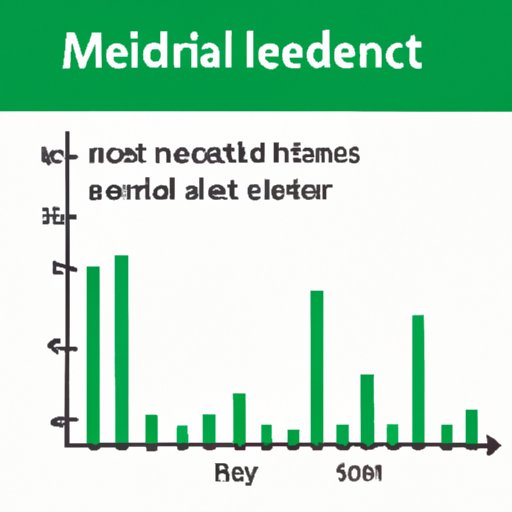I. Introduction
Understanding how to find the median of a data set is an important skill in data analysis. The median is a measure of central tendency that can provide a more accurate representation of a data set compared to other measures like the mean. In this article, we will provide you with a step-by-step guide for finding the median, real-life examples of its usefulness, practical applications in various fields, and answer some common questions about this measure.
II. Step-by-Step Guide
The median is the middle value of a data set when it is ordered from lowest to highest. To find the median:
- Order the data set from lowest to highest.
- Determine if the number of values in the data set is even or odd.
- If the number of values is odd, the median is the middle number.
- If the number of values is even, find the two middle numbers and take the average of those numbers to find the median.
For example, let’s find the median of the following data set:
10, 15, 20, 25, 30, 35, 40
1. Order the data set from lowest to highest: 10, 15, 20, 25, 30, 35, 40
2. Determine if the number of values is odd or even. There are seven values, which is an odd number.
3. Since there is an odd number of values, the median is the middle number. In this case, the middle number is 25, so the median of this data set is 25.
III. Real-life Examples
The median can be useful in real-life scenarios where the data contains outliers or extreme values. For example, in a data set of salaries, if one employee earns much more than the others, the mean may not be an accurate representation of the central tendency. The median can provide a more accurate picture of what the typical salary is.
Another real-life example is in weather data. If we have a data set that includes daily temperatures, the median temperature may be more useful than the mean temperature because it reflects the temperature range experienced by most people.
The median is also used in fields like psychology, where researchers may use it to determine if a particular psychological trait is common or rare in a population.
IV. Visual Aid
Visual aids such as graphs and diagrams can help readers understand the concept of finding the median. Below is an example of a histogram that shows the distribution of test scores and the location of the median.

Visual aids can help readers quickly identify the middle value of a data set and see how it relates to the rest of the data.
V. Practical Application
The median has practical applications in various fields. In finance, for example, the median can be used to determine the typical income of a particular group of employees. It can also be used to evaluate the performance of a particular investment over several years.
In stock market analysis, the median is used to determine the average trading volume of a particular stock, which can help investors decide if it’s a good investment. The median can also be used to determine the typical price range for a particular stock.
In sports data analysis, the median can be used to determine the typical performance of a team or player, as well as to predict future performance based on past data.
VI. Frequently Asked Questions
What is the median?
The median is the middle value of a data set when it is ordered from lowest to highest.
What is the difference between the mean and the median?
The mean is the average of the values in a data set, while the median is the middle value. The mean is affected by outliers or extreme values, while the median is not.
When should I use the median instead of the mean?
You should use the median when the data set includes outliers or extreme values that can have a significant impact on the mean. The median provides a more accurate representation of the central tendency in these cases.
VII. Conclusion
Finding the median of a data set is an important skill in data analysis. It provides a more accurate representation of the central tendency compared to other measures like the mean. We hope this comprehensive guide has provided you with the knowledge and tools necessary to confidently find the median of any data set you encounter. Remember to apply this new knowledge to real-world scenarios to gain a deeper understanding of its practical applications.
